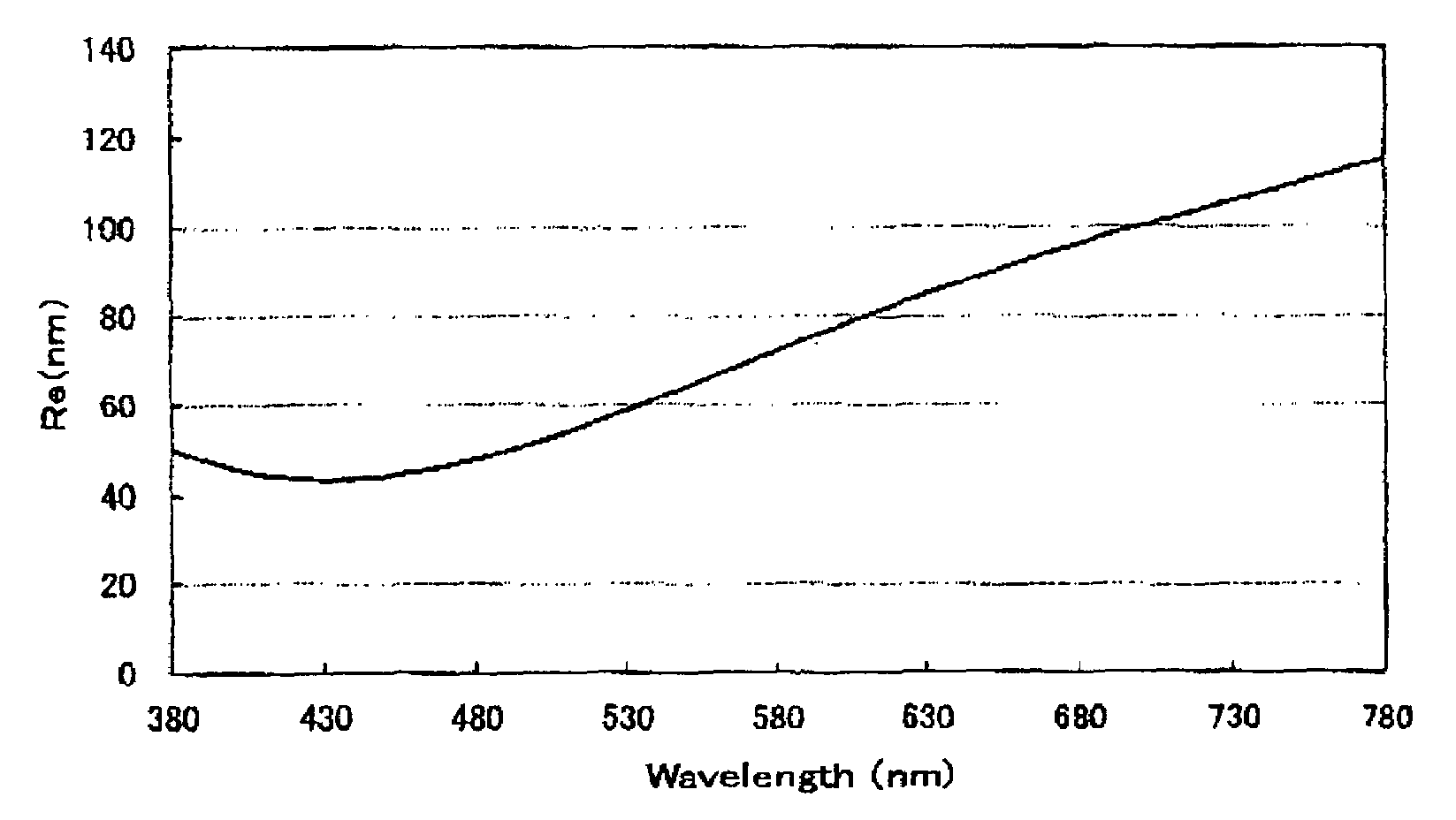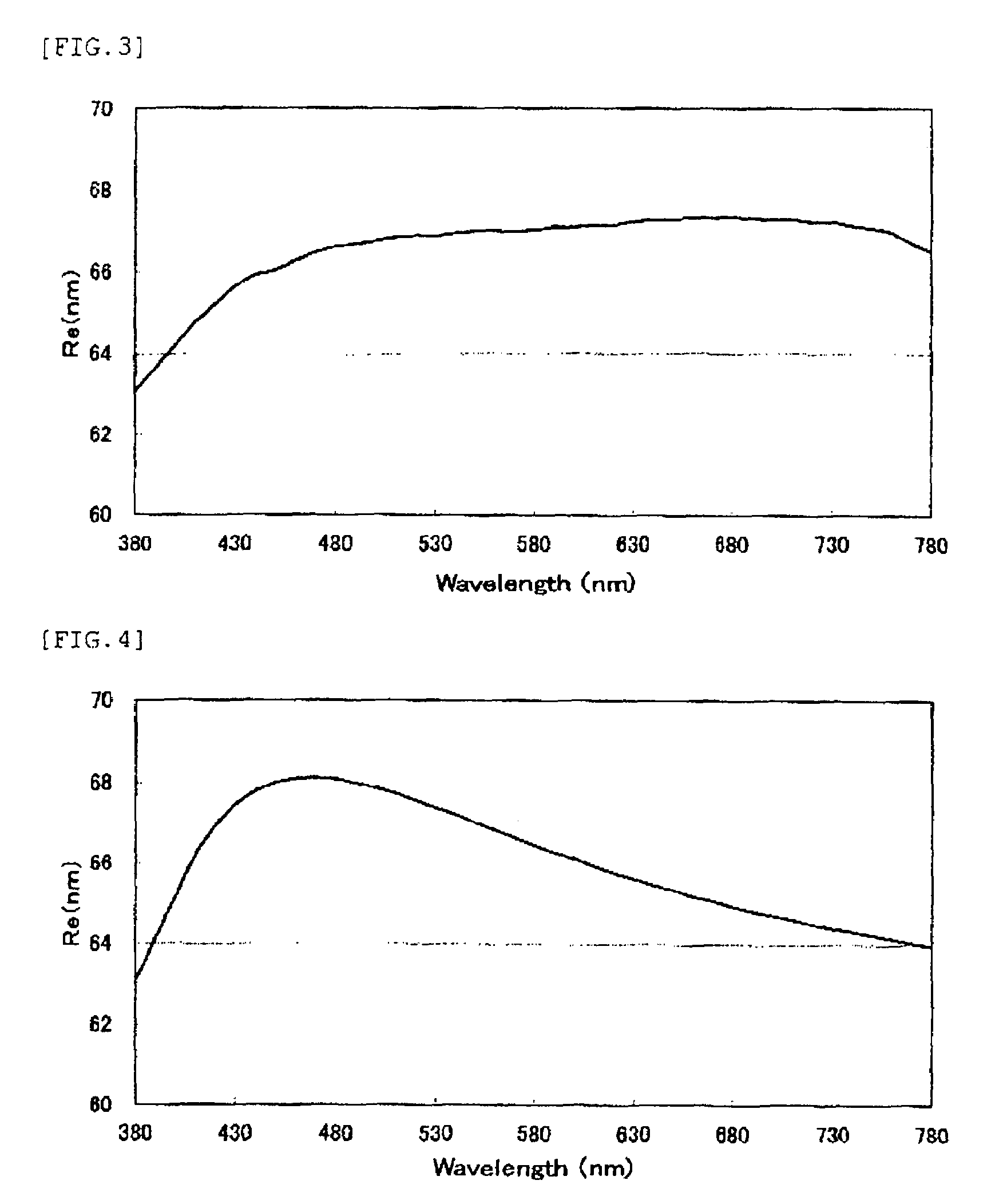Optically anisotropic body and liquid crystal display
a liquid crystal display and anisotropic body technology, applied in the field liquid crystal display, can solve the problems of low yield of optical anisotropic body, unsatisfactory efforts, and degree of screen false color, so as to prevent a drop in contrast and false colors, increase viewing angle, and widen the allowable range
- Summary
- Abstract
- Description
- Claims
- Application Information
AI Technical Summary
Benefits of technology
Problems solved by technology
Method used
Image
Examples
fabrication example 1
[0115]50 mol % of monomer A (Chemical 2) and 50 mol % of monomer B (Chemical 3) having the structures shown below were dissolved in a sodium hydroxide aqueous solution and a small amount of hydrosulfite was added. Next, to this was added methylene chloride and then phosgene was blown in at 20° C. for 60 minutes. Then p-tert-butylphenol was added and emulsified. Triethylamine was added and then this was stirred at 30° C. for 3 hours to complete the reaction. After the reaction was completed, the organic phase was isolated and the methylene chloride was distilled out to obtain a polycarbonate copolymer.
[0116]
example 1
Optically Anisotropic Body A1
[0117]An undrawn layered body comprising a layer [1] comprising 6 parts by weight of 2,2-methylenebis(4-(1,1,3,3-tetramethylbutyl)-6-(2H-benzotriazole-2-yl) phenol) [ADEKASTAB LA-31 made by ASAHI DENKA Co., Ltd] as an ultraviolet light absorption agent exhibiting dichroism, and 100 parts by weight of norbornene resin [ZEONOR 1420R made by Zeon Corporation, glass transition temperature of 136° C.], a layer [2] comprising a copolymer of styrene and maleic anhydride [glass transition temperature of 130° C.], and a layer [3] comprising a denatured copolymer of ethylene and vinyl acetate [Vicat softening point 80° C.] and having the structure of layer [1] (100 μm)-layer [3] (7 μm)-layer [2] (50 μm)-layer [3] (7 μm)-layer [1] (100 μm) was obtained using co-extrusion molding.
[0118]The undrawn layered body was uniaxial drawn in the machine direction at a temperature of 140° C. and a drawing ratio of 1.5 with a drawing machine using the float system between rolls...
fabrication example 2
Fabrication of the Light Polarizer
[0132]A 75 μm polyvinyl alcohol film is allowed to soak for 2 minutes in an aqueous solution containing 0.01 parts by weight of iodine and 2 parts by weight of potassium iodide per 100 parts by weight of water, respectively, at 30° C. while being drawn at a drawing ratio of 3. Next, the film is allowed to soak in an aqueous solution containing 5 parts by weight of boric acid and 3 parts by weight of potassium iodide, respectively, in 100 parts by weight of water at 60° C. for 5 minutes. Then the film is washed with pure water for 10 seconds and allowed to dry at 50° C. for 6 minutes to obtain the light polarizer.
PUM
| Property | Measurement | Unit |
|---|---|---|
| wavelength range | aaaaa | aaaaa |
| wavelength range | aaaaa | aaaaa |
| wavelength | aaaaa | aaaaa |
Abstract
Description
Claims
Application Information
 Login to View More
Login to View More - R&D
- Intellectual Property
- Life Sciences
- Materials
- Tech Scout
- Unparalleled Data Quality
- Higher Quality Content
- 60% Fewer Hallucinations
Browse by: Latest US Patents, China's latest patents, Technical Efficacy Thesaurus, Application Domain, Technology Topic, Popular Technical Reports.
© 2025 PatSnap. All rights reserved.Legal|Privacy policy|Modern Slavery Act Transparency Statement|Sitemap|About US| Contact US: help@patsnap.com



